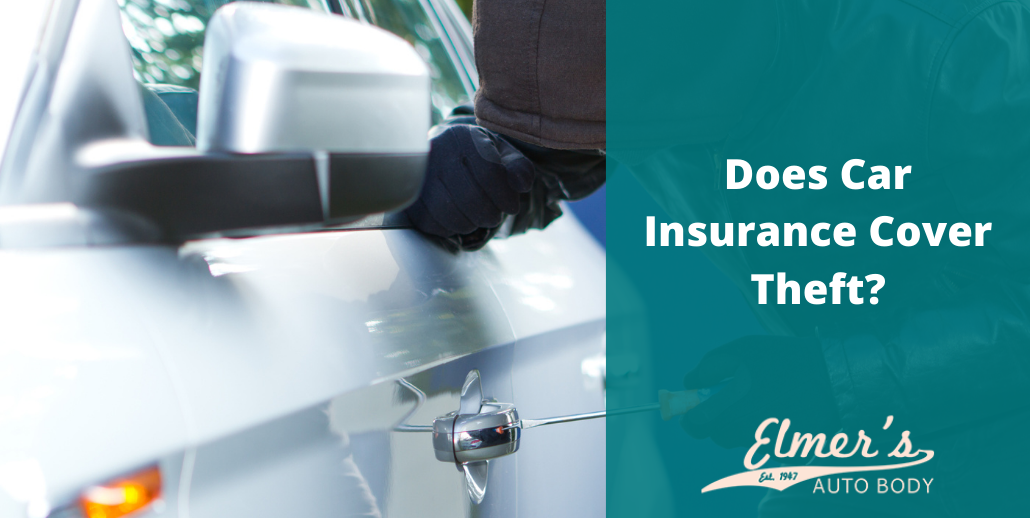Most people expect their car to be waiting for them when they return to the parking lot after working or shopping. Unfortunately, there may come a time when, after a long day or early in the morning, you head out to where your vehicle should be only to find it missing. Frantically, you search the street. You think to yourself that maybe you’ve forgotten where the car’s parked. But then, reality sets in—your car has been stolen.
It’s a situation no one wants to be in.
After initial questions have been answered, like whether your car was towed, you will have to call the police to have a police report filed. From there, you may wonder if car insurance covers motor vehicle theft.
The answer is yes, and it’s probably the best news you will receive all day in this scenario.
What Type Of Insurance Covers Car Theft?
There are a few components to car insurance. Depending on your coverage, you may have several kinds of auto insurance and varying layers of coverage.
The different insurance types are:
- Liability coverage: Protects other drivers from injury and property damage caused by you
- Personal injury coverage: Assists with payments when you or passengers in your vehicle are hurt in an accident
- Collision coverage: Covers damages to your car as the result of an accident
- Comprehensive coverage: Otherwise known as comp insurance, this coverage protects your vehicle from “Acts of God,” which includes natural disasters, vandalism, and even theft—with some conditions
In other words, unless you have comprehensive coverage, which is usually purchased as a supplement to collision coverage, you will not be protected from damages that happen to your car while you’re not operating it. But if you do have comp insurance, a percentage of expenses will be covered in the event a tree collapses on your car, or it is stolen or broken into, and so on.
However, there is one exception to this. If you have leased a vehicle or have it on loan and it gets stolen, comprehensive coverage cannot help you. Instead, you should consider “gap insurance.”
Usually, your insurer will pay you the actual cash value (ACV) of the vehicle. Gap insurance, though, means that the payout is the difference between what is still owed on the vehicle and the ACV. This can help if you owe money on the vehicle or if it has depreciated in value. All insurance carriers have limits on the “gap,” but the coverage itself is relatively affordable.
How Much Money Will I Receive?
As mentioned earlier, comprehensive insurance will cover the actual cash value of the vehicle. If your policy covers car rental reimbursement, then you may have the expenses of renting a car covered while the claim is processing.
The ACV is the value given by the adjuster. They will consider things like the vehicle’s make, model, Blue Book value, and accident history to figure out the total amount. Core fixtures in the car will count towards the overall ACV. For example, the tires, seats, and installed GPS system will add value.
However, any accessory items, such as an attached GPS or a plugged in MP3 player are not covered by your comprehensive insurance.
I left my car keys in the ignition when the car was stolen. Does insurance cover that?
We all make mistakes from time to time. Leaving your keys in the car and coming back to an empty parking spot is one of them. Despite what others may have told you, the insurance company will not penalize you for such a mistake or consider the action negligent enough to dismiss your claim. You’re still covered.
Is The Theft Of Personal Items In The Car Covered By Insurance?
Car insurance does not cover the theft of items that were in your car, even if someone just broke into it. That doesn’t mean you can’t get something back for your items. You may be able to file a claim of any personal items that were stolen alongside your car by contacting your homeowners or renters insurance carrier.
It may come as a surprise, but renters and home insurance covers belongings in your car, too. It’s not bound solely to your home or apartment.
What Is The Entire Claim Process For A Stolen Car?
The stolen vehicle claim process can be exasperating—but don’t get discouraged. You will have to discuss the circumstances with an insurance adjuster. Be sure to have the police report and other information, such as the date and time of the theft, on hand while answering questions. The adjuster has to make sure that your claim is not fraudulent before the claim can proceed.
Keep in mind that, if your car is stolen, you are making a total loss claim. You will come to an agreement between you and the insurance company, as well as any lender who made a vehicle loan. If your vehicle is recovered later on, the insurance company will probably have ownership.
If you decide to wait to see if your car is found, then you should also know that comprehensive car insurance also covers any damages to the vehicle that the thief inflicted. You may need to pay a deductible, though.
Have Damages From a Break-In or Car Theft?
Does car insurance cover car theft? Yes, if you have comprehensive coverage or gap insurance. It should give you a little peace of mind to know that you can receive payment for a stolen vehicle and be able to rent a substitute until your car is found. In the event you have damages upon recovery, look for an auto body shop with expertise in both exterior and interior repairs.
Whether you need auto body work done to your vehicle or have questions about services, we are here to help. Send us a message by filling out the contact form, and our friendly team will get back to you.


